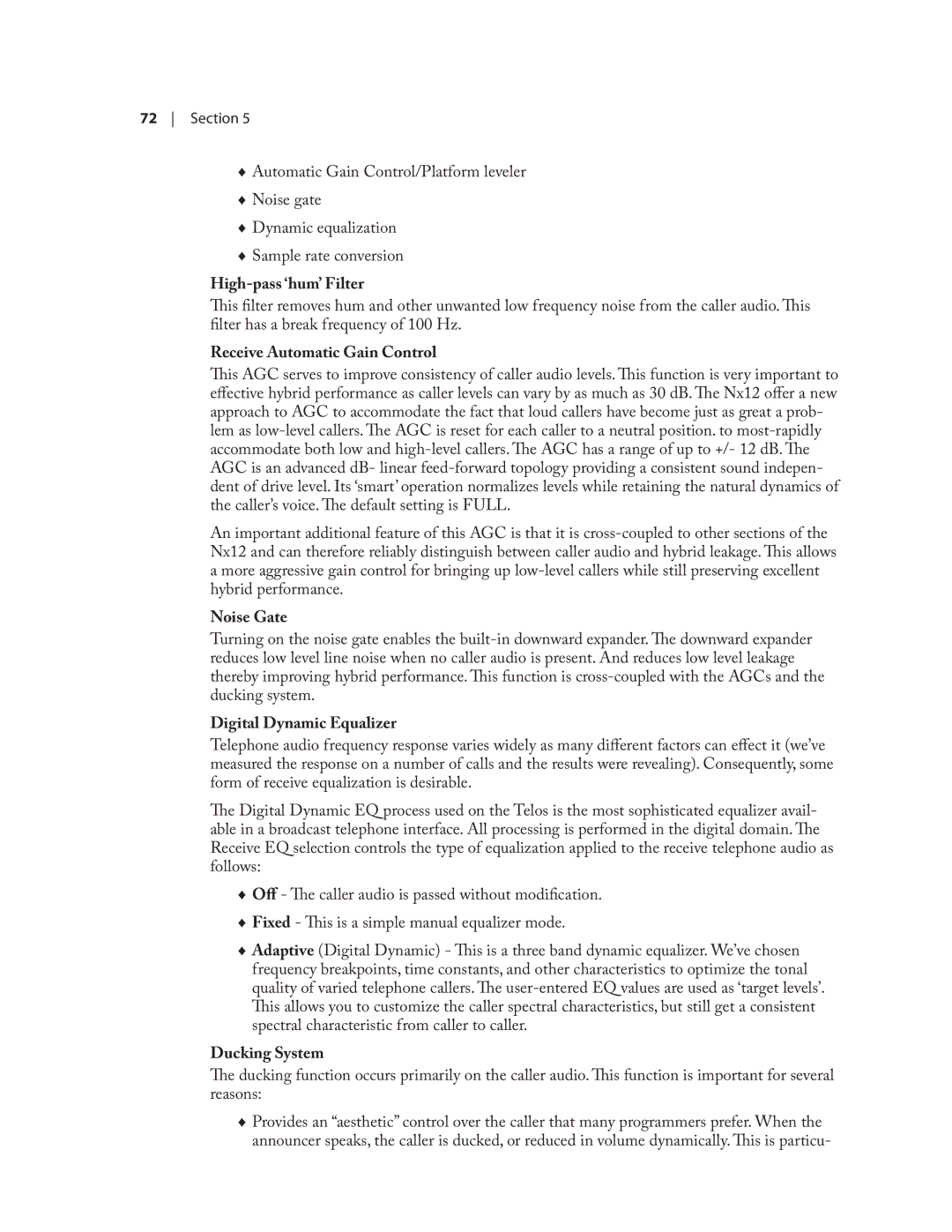72 Section 5
♦♦ Automatic Gain Control/Platform leveler ♦♦ Noise gate
♦♦ Dynamic equalization ♦♦ Sample rate conversion
High-pass ‘hum’ Filter
This filter removes hum and other unwanted low frequency noise from the caller audio. This filter has a break frequency of 100 Hz.
Receive Automatic Gain Control
This AGC serves to improve consistency of caller audio levels. This function is very important to effective hybrid performance as caller levels can vary by as much as 30 dB. The Nx12 offer a new approach to AGC to accommodate the fact that loud callers have become just as great a prob- lem as
An important additional feature of this AGC is that it is
Noise Gate
Turning on the noise gate enables the
Digital Dynamic Equalizer
Telephone audio frequency response varies widely as many different factors can effect it (we’ve measured the response on a number of calls and the results were revealing). Consequently, some form of receive equalization is desirable.
The Digital Dynamic EQ process used on the Telos is the most sophisticated equalizer avail- able in a broadcast telephone interface. All processing is performed in the digital domain. The Receive EQ selection controls the type of equalization applied to the receive telephone audio as follows:
♦♦ Off - The caller audio is passed without modification. ♦♦ Fixed - This is a simple manual equalizer mode.
♦♦ Adaptive (Digital Dynamic) - This is a three band dynamic equalizer. We’ve chosen frequency breakpoints, time constants, and other characteristics to optimize the tonal quality of varied telephone callers. The
Ducking System
The ducking function occurs primarily on the caller audio. This function is important for several reasons:
♦♦ Provides an “aesthetic” control over the caller that many programmers prefer. When the announcer speaks, the caller is ducked, or reduced in volume dynamically. This is particu-
